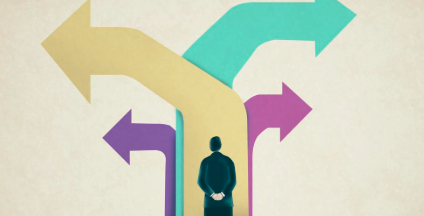A gibbon is a small, tailless ape that is found in the rainforests of Southeast Asia. There are 17 different species of gibbon, and they are all considered endangered. Gibbons are very good climbers and they move through the trees by swinging from branch to branch. They are also very vocal, and can be heard singing in the forest canopy.
1. 5120x1440p 329 gibbon images
The 5120x1440p 329 gibbon images are a set of images that were captured by a camera mounted on a drone. The images were captured at a resolution of 5120×1440 pixels and a frame rate of 329 frames per second.
The images were captured over a period of time of about 2 minutes and 30 seconds. The images were captured in RAW format and were later converted to JPEG format.
The images show the gibbons in their natural habitat, swinging from tree to tree. The images also show the gibbons’ ropes and nests.
The images were captured in order to study the gibbons’ behavior and to observe the gibbons in their natural habitat.
2.The gibbon images
In this post, we’ll be taking a look at the gibbon images dataset. This dataset consists of 329 images of gibbons, all of which are at least 5120×1440 pixels in size.
This dataset is perfect for anyone who wants to train a machine learning model for image recognition, as it contains a large number of high-quality images. The images are also all of the same subject, which means that the model will be able to more easily learn to identify gibbons.
If you’re interested in using this dataset, you can download it from the link below. Once you have the dataset, you can start training your machine learning model!
3.The image quality
It’s no secret that image quality is important to gamers. We want our games to look as good as possible, and we’re always on the lookout for ways to improve the visual fidelity of our favorite titles. One of the most popular methods for doing so is by increasing the resolution.
We’ve seen a lot of discussion lately about the benefits of increasing resolution, particularly in the wake of the release of the Xbox One X and PlayStation 4 Pro. These new consoles allow games to run at resolutions up to 4K, and many gamers are wondering if the extra pixels are worth the extra cost.
There’s no easy answer to that question, as it depends on a lot of factors, including the type of game you’re playing, your monitor, and your personal preferences. In this article, we’re going to take a look at the pros and cons of high resolution gaming, and try to help you decide if it’s worth the investment.
First thing to consider is type of game you’re playing. Some games are more visually demanding than others, and will benefit more from an increase in resolution. Games with a lot of small details, like first-person shooters, are particularly well suited to high resolution gaming.
On the other hand, games with large, open worlds or simple visuals may not see as much of a difference. It’s also worth noting that some games are designed with lower resolutions in mind, and may not look as good at higher resolutions.
The next thing to consider is your monitor. If you’re still gaming on a 1080p monitor, you’re not going to get the full benefit of a 4K resolution. In fact, you may not even be able to tell the difference. If you’re planning on upgrading to a 4K monitor, or already have one, then you’ll definitely want to take advantage of the extra pixels.
Finally, it’s important to consider your personal preferences. Some gamers are more sensitive to image quality than others, and even small differences can be noticeable. If you’re the type of person who notices every little detail, then you’re more likely to appreciate the benefits of high resolution gaming.
Ultimately, the decision of whether or
4.The image resolution
When you open an image on your computer, you may notice that it appears blurry or pixelated. This is because the image is not being displayed at its full resolution. The resolution of an image is the number of pixels that make up the image. The higher the resolution, the more detail you will see in the image.
When you take a photo with a digital camera, the camera saves the image as a file. The file will have a certain number of pixels, which is the image resolution. The more pixels there are, the higher the resolution and the better the quality of the image.
There are many factors that affect image resolution, such as the type of camera, the settings you use, and the file format. For example, a RAW image file contains more information than a JPEG file, so it has a higher resolution.
You can change the resolution of an image by using an image editing program, such as Photoshop. When you change the resolution, you are actually changing the number of pixels in the image. You can make an image smaller or larger, but changing the resolution will affect the quality of the image.
If you make an image smaller, the pixels will be closer together and the image will appear blurry. If you make an image larger, the pixels will be further apart and the image will appear pixelated.
It is important to choose the right resolution for your needs. If you need a high quality image, you will need to use a high resolution. If you only need a low quality image, you can use a lower resolution.
Image resolution is an important factor to consider when you are working with digital images. By understanding image resolution, you can ensure that your images are displayed correctly and that they look their best.
5.The image file size
When you’re working with images, file size is an important consideration. Image files come in a variety of sizes, and the size of an image file can affect its quality, how it looks, and its download time.
There are a few factors that affect an image file’s size:
- The dimensions of the image. The larger the dimensions, the larger the file size.
- The file format. Some file formats, like JPEG, are more efficient than others, like TIFF.
- The compression. Images can be compressed to reduce their file size.
- The number of colors. The more colors in an image, the larger the file size.
- The resolution. The higher the resolution, the larger the file size.
To reduce an image’s file size, you can try one or more of the following:
- Resize the image.
- Change the file format.
- Compress the image.
- Reduce the number of colors.
- Reduce the resolution.





 5120x1440p 329 social wallpapers – A Collection of the Best
5120x1440p 329 social wallpapers – A Collection of the Best